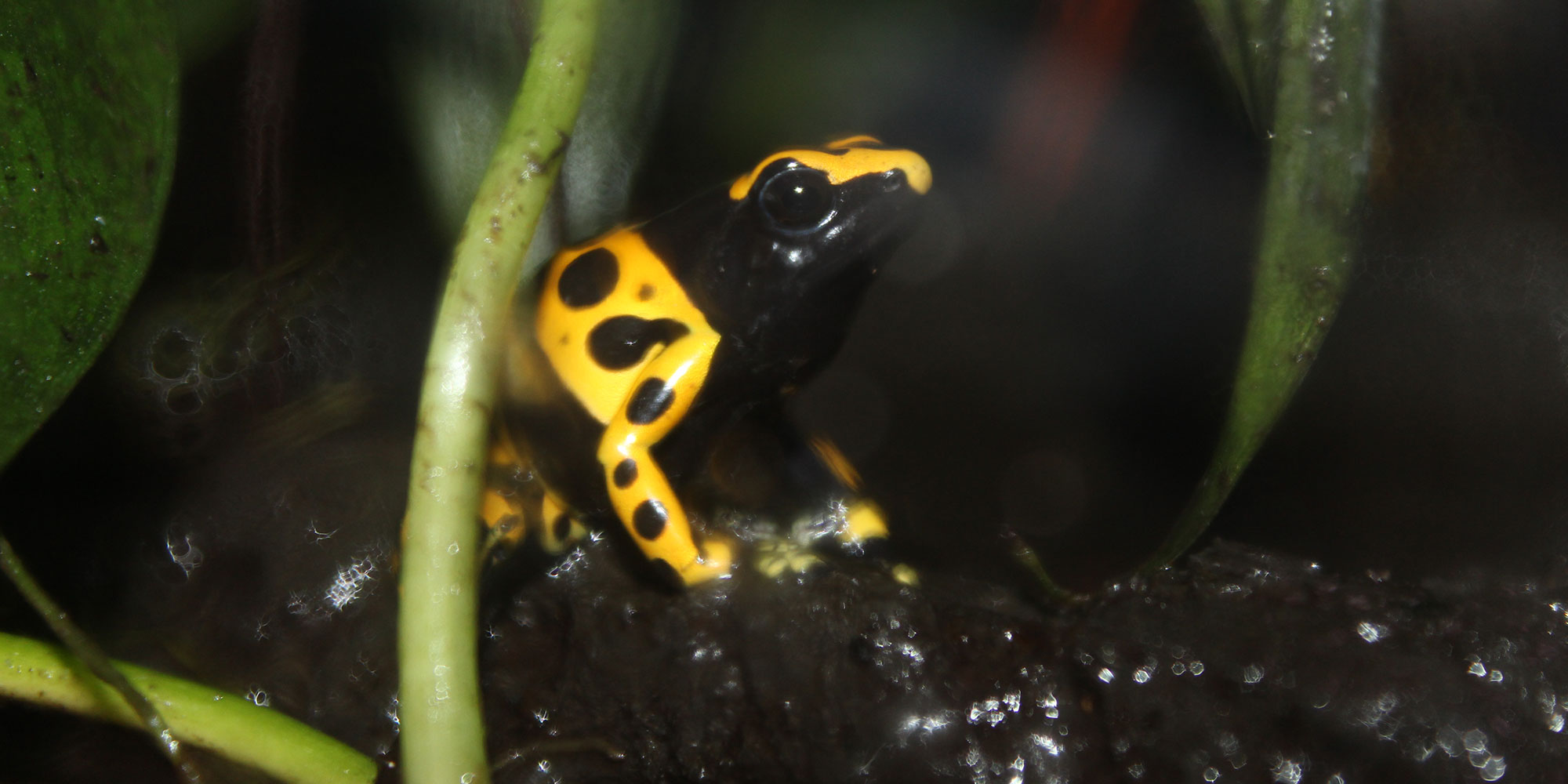Amphibians are a group of cold blooded vertebrates ranging from frogs, toads, newts, salamanders and caecilians. These animals do not have scales; instead they have a porous skin that always needs to stay wet or damp. Their skin is where they breathe from. As newly hatched and juveniles they are living in water with gills allowing them to breathe. To become an adult they go through metamorphoses and most will emerge from the water. Ancestors of the amphibians, around 300-400 million years ago, were the first animals to leave the water and walk onto land.
Metamorphoses – A process that many animals go through to change from their juvenile stage and transform into an adult. Most amphibians go through a process of complete metamorphoses where the animal that hatches from an egg is physically different then the adult they turn into. For most frogs they start as a tadpole with gills, a tail, and no arms or legs. The Solomon Island leaf frog and Kihansi spray toads will go through an incomplete metamorphose. This is where the animal that hatches from the egg is a smaller version of the adult.
Axolotl (Ambystoma mexicanum)
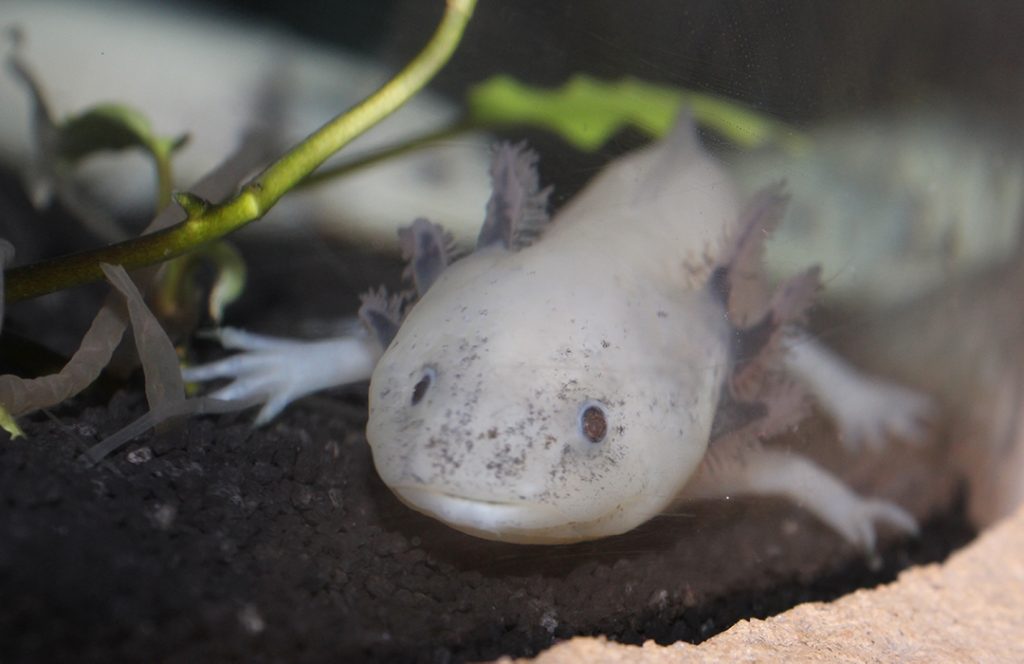
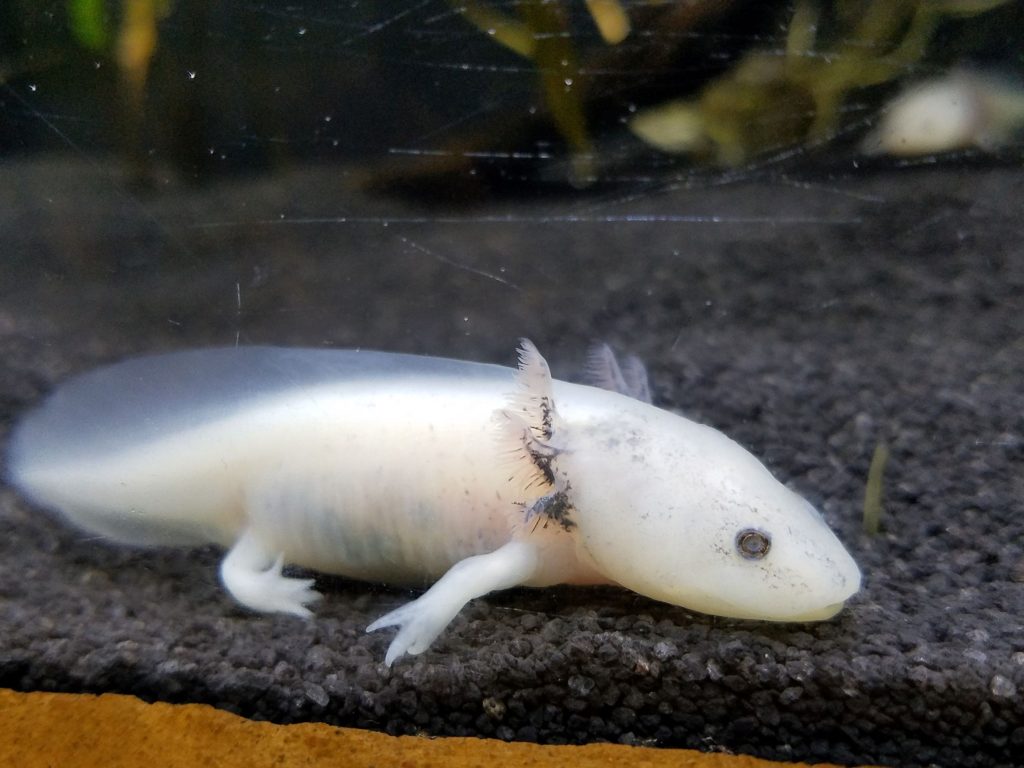
Although it looks like a lizard and is commonly called the Mexican Walking Fish, it is neither! Axolotls are Urodele amphibians, like salamanders and newts. Like all Urodele amphibians, they have amazing healing and regenerative abilities. They can regrow their limbs, jaws, tail, spinal cord and skin. Axolotls can even receive transplanted organs and accept them without rejection, making them valuable animals for scientific research. Found in freshwater lakes in Mexico City, human expansion and habitat destruction has made them critically endangered in nature.
Poison Dart Frogs
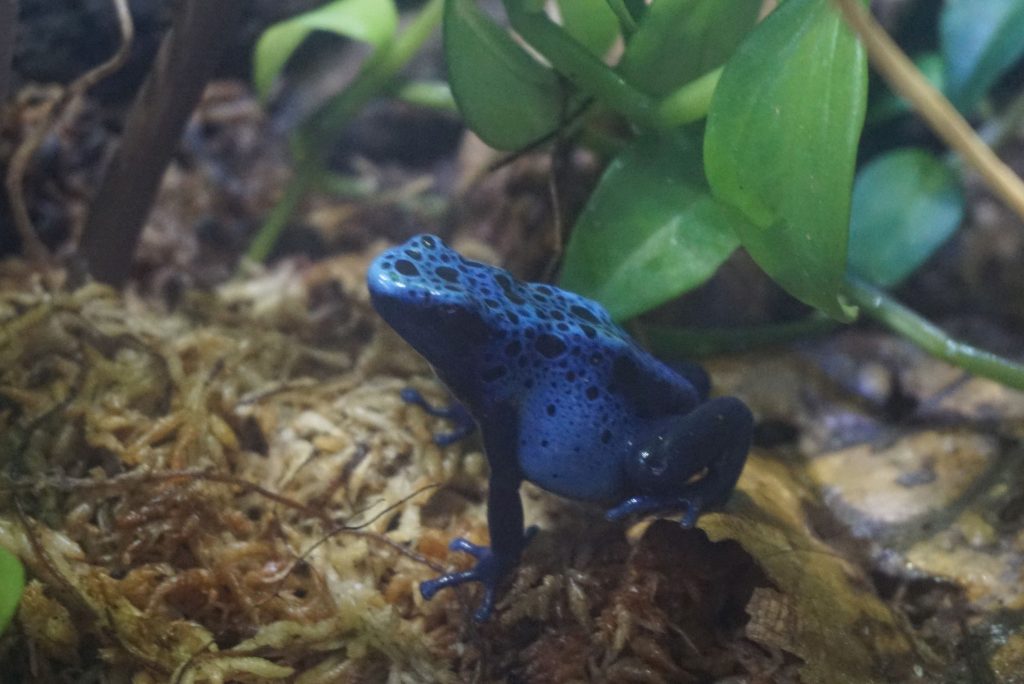
Poison Dart Frogs are some of the prettiest but smallest animals on the planet. They can range in size from a half inch all the way to about 2-3 inches. Their bright and vibrant colors warn predators that eating or ingesting these frogs could have very negative effects. Their poison however actually comes from the food that they eat ranging from toxic ants, beetles and millipedes. Due to this poison the dart frogs only have one natural predator: the fire-bellied snake, which actually has a natural resistance against the poisons produced by the poison dart frogs. Almost all of the dart frogs you will see within facilities, nature centers and even home pets are all captive bred. Because of that they lack the poison they would normally have in nature by eating a captive bred diet of flightless fruit flies.
Dart frogs are excellent parents laying clutches of eggs on fallen leaves near bodies of water or on plants such as bromeliads that are suspended about basins of water. Once the eggs hatch to tadpoles the parent dart frogs will transport the tadpoles onto their back and bring them to a body of water to grow. After a few months of feeding on decaying plant matter and insects that have fallen into the water, the tadpoles back legs start to form. Then their front two legs emerge as their tail starts to shrink and eventually disappear. When their tail is fully gone they emerge out of the water and begin their life on land for the remainder of their life living near the water but not in it.
The biggest threats facing poison dart frogs in their native range is the destruction of the rain forests that they live in. These rain forests are destroyed for many reasons such as logging, to make room for agriculture (grazing areas for cattle and to grow crops), pulp to make paper, and mining for minerals and gold.
Green and Black poison Dart Frog (Dendrobates Auratus)
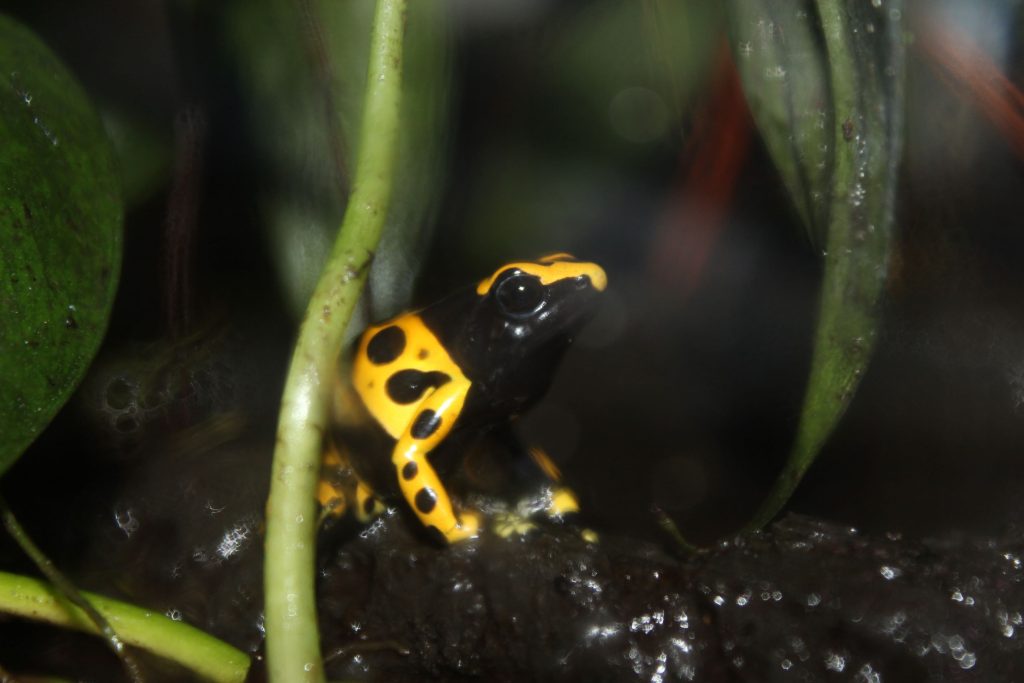
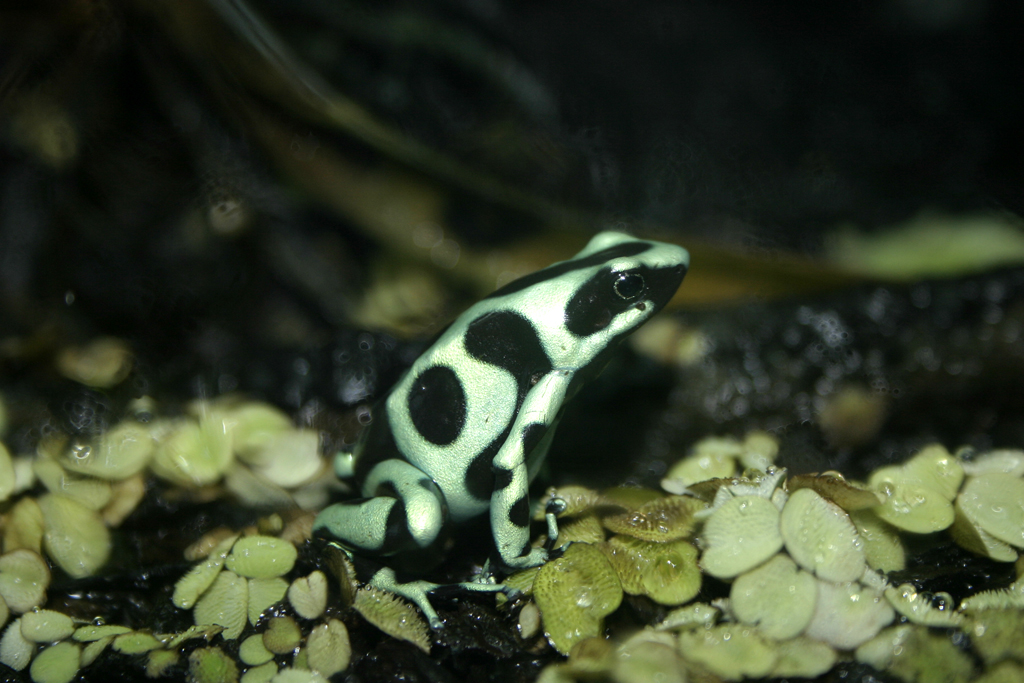
These frogs are a broad species ranging over 20 different species locales. All of the locales have a similar patterned to them being a bright green or blue with black patches mixed throughout. The Auratus’s can be found all throughout the rainforests of Central and South America. The males have a quite call. Scientists studying this species have actually created a painkiller from the poison of the Auratus frog. The pain killer tebanicline is 200 times stronger than morphine without the addictive side effects. However the drug has been shown to have both adverse neurological and muscular side effects.
Santa Isabel Dart Frog (Epipeodbates anthonyi)
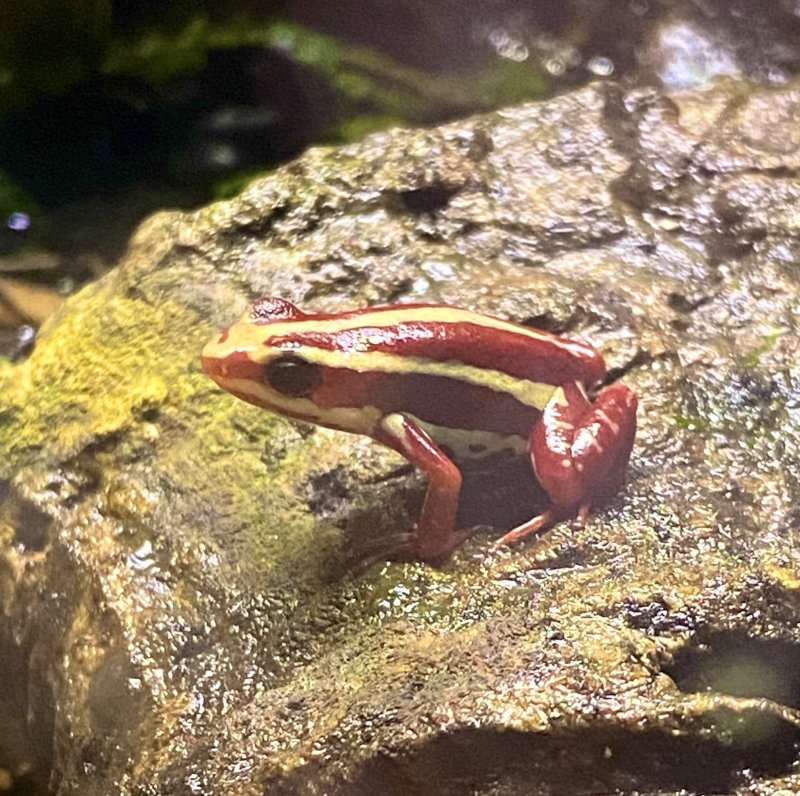
This small but bold species of dart frog is found in the rainforest of Ecuador. Isabel Dart frogs have a Redish brown color with green stripes running through their body. They live in breeding groups near a small body of water where they are able to lay their eggs. Males have a loud whistling call to attract females. They lay clutches of 10-20 eggs on large leaves above the water or bromeliads. When the tadpoles hatch from their egg, the parents will pick up the tadpole onto their back and transport it to a body of water to grow.
Vietnamese Mossy Frogs (Theloderma corticale)
Vietnamese mossy frogs are found in flooded caves and in the banks of rocky mountain streams at elevations of 2,000 to 3,000 feet. This semi-aquatic species spends much of the time hiding in the water under rocks and floating plants. Their bodies resemble a moss or lichen which allows them to hide and avoid predators or ambush their prey.
